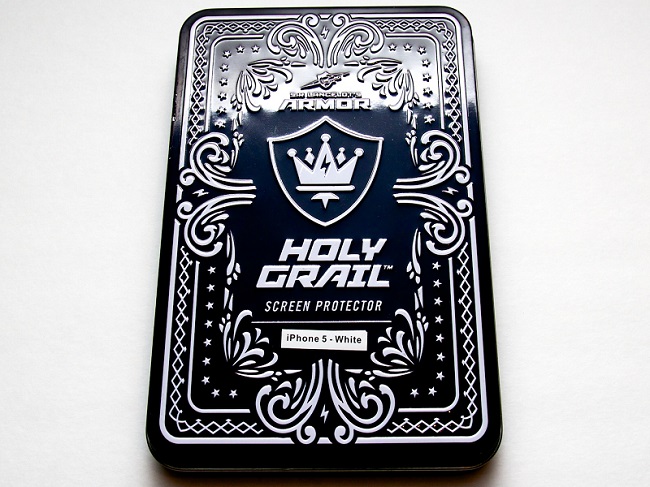Oppo Find 7 phone
A look at gadget happenings, as Oppo releases a phone with a 50MP camera, bullet-proof iPad and iPhone cases, and a new fingerprint using nanowires that aims to prevent counterfeiting.
Oppo Find 7 phone
Oppo, a Chinese smartphone manufacturer, is attempting to break the already constricted smartphone market with the release of its Find 7 phone that, among other serious tech, boasts a 50MP camera.
The phone has just been released in its native China and features a 5.5-inch Quad HD display. To put this into perspective of how crisp this display will look, its resolution is a staggering 2,560 x 1,440 pixels, putting it far ahead of one of the best-selling phones on the market, the iPhone 5s, which features a 4-inch display with a 1,136 x 640 pixel resolution.
It also packs a hefty punch in terms of computing power with its quad-core Qualcomm Snapdragon 801 processor, coming in at 2.5GHz.
Storage-wise, it has 3GB of RAM and a perfectly capable 32GB hard drive for all sorts of high-memory files.
While the phone can produce 50MP-quality images, the internal camera is actually a still perfectly acceptable 13MP Sony camera, but some software trickery brings the resolution to 50MP.
Consumers in Ireland interested in the phone, for once we’re not left licking our lips at technology that never makes it here as the company will begin selling the handset online from mid-April for US$599 (€434).
Sir Lancelot’s Holy Grail bulletproof iPhone and iPad cases
One can’t help but think of Monty Python and the Holy Grail with American manufacturer Sir Lancelot’s Armor’s release of what it claims is the first re-usable bulletproof iPhone (both iPhone 4 and 5) and iPad cases.
What use a bullet-proof iPhone case has in a shootout, let alone one that supposedly can take multiple shots is anyone’s guess, but the guys at Sir Lancelot are pretty proud of their work.
On its website, the company claims: “The Holy Grail material is one of hardest materials available. A nice on the Mohs Scale of Hardness, there are very few materials harder then [sic] the Holy Grail protectors. This means, Sir Lancelot’s Armor Holy Grail protector is nearly impossible to scratch. It is also uniquely strong, allowing it to absorb most impacts with no damage.”
Making these bold claims, a number of American news outlets have already put the glass through its paces with some less-than appealing results to its producers. For example, arstechnica did a number of tests, using screwdrivers and bullets. The Holy Grail took the damage of a screwdriver with success, but bullets blew it apart.
While clearly a bold claim, the screen is definitely more for the type of person who has spent as much on screen repairs as they did on their original phone.

Anti-counterfeit nanoscale fingerprints
A team of researchers in Korea has decided that the human fingerprint, used in the field of identification for decades, is no longer enough of a protection from counterfeiting goods.
These silver nanoscale fingerprints are made by randomly dumping 20 to 30 individual minuscule nanowires onto a thin plastic film which could be used to tag a variety of goods, from electronics and drugs to credit cards and bank notes.
Lead author of the research, Prof Hyotcherl Ihee, from the Korea Advanced Institute of Science and Technology (KAIST) and Institute for Basic Science (IBS), said, “It is nearly impossible to replicate the fingerprints due to the difficulty in trying to manipulate the tiny nanowires into a desired pattern. The cost of generating such an identical counterfeit pattern would generally be much higher than the value of the typical product being protected.”
While we tend to associate science-fiction-sounding technology as being prohibitively expensive, the team claims the fingerprints could be produced at a cost of less than US$1 per single pattern.
Saorview calls on viewers to rescan their boxes
For those of you using the Saorview digital TV set-top boxes, the company wants you to carry out a rescan of your Saorview equipment in order to receive technical upgrades that will enable you to avail of a further roll out of HD services on the digital service.
While Saorview claims the majority of Irish users have already completed the rescan, it is necessary for the remainder to do so before Wednesday, 2 April, in order to ensure the continued reception of RTÉ One.
From tomorrow (Tuesday, 25 March), Saorview viewers who need to rescan will see a message on-screen for RTÉ One – viewers who see this on-screen message are advised to follow the instructions.
Saorview customers who can see RTÉ One with the HD logo on the top right of their screens will have successfully completed the rescan and will be ready to go.
For viewers who have already rescanned in October, there’s no need to panic as they are not required to carry out this process again.
Stay informed – get daily updates on the latest happenings in technology directly to your inbox.